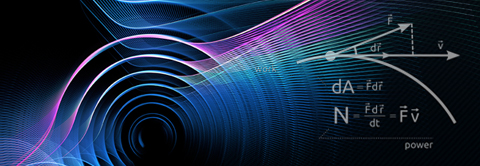Entanglement probe of two-impurity Kondo physics
2016.09.19 16:01
| 날짜 | 2016-09-21 16:00 |
|---|---|
| 연사 | |
| 장소 | E6-2. #2502(2nd fl.) |
Entanglement probe of two-impurity Kondo physics
4pm, Sep. 21 (Wed.), E6-2. #2502(2nd fl.)
Dr. Henrik Johannesson , University of Gothenburg (Sweden) and Beijing Computational Science Research Center (China)
The two-impurity Kondo model has bearings on a number of topical problems, from heavy-fermion physics to spin-based quantum computing. In this talk I will review what is known about the model and also present a novel approach to its study, initiated in a collaboration with A. Bayat, S. Bose, and P. Sodano [1]. Specifically, we propose that real-space properties of the model can be obtained from an effective spin model where two single-impurity Kondo spin chains are joined via an RKKY interaction between the two impurity spins. We then use the Density Matrix Renormalization Group (DMRG) to study its features, using two complementary quantum-entanglement measures, the negativity and the von Neumann entropy. This nonperturbative approach enables us to uncover the Kondo screening cloud and its enhancement in the limit of large ferromagnetic RKKY coupling, thus corroborating a long-standing conjecture of ”Kondo resonance narrowing" for effectively large impurity spins. In a follow-up work [2], we extended our approach to study the entanglement spectrum of the model, and obtained the Schmidt gap, i.e. the difference between the two largest eigenvalues of the reduced density matrix. The Schmidt gap is found to signal the quantum phase transition between the Kondo and RKKY phases, in effect serving as an order parameter, correctly predicting the known scaling exponent for the Kondo crossover length at the critical point. Time permitting, I will briefly discuss also some more recent applications of our approach, to the study of local quantum quenches [3], the entanglement structure of the two-channel Kondo model [4], and impurity quantum thermodynamics [5].
[1] A. Bayat et al., Phys. Rev. Lett. 109, 066403 (2012)
[2] A. Bayat et al., Nat. Comm. 5, 3784 (2014)
[3] A. Bayat et al., Phys. Rev. B 92, 155141 (2015)
[4] B. Alkurtass et al., Phys. Rev. B 93, 081106(R) (2016)
[5] A. Bayat et al., Phys. Rev. B 93, 201106(R) (2016)
Contact: Heung Sun Sim, Physics Dept., (hs_sim@kaist.ac.kr)







